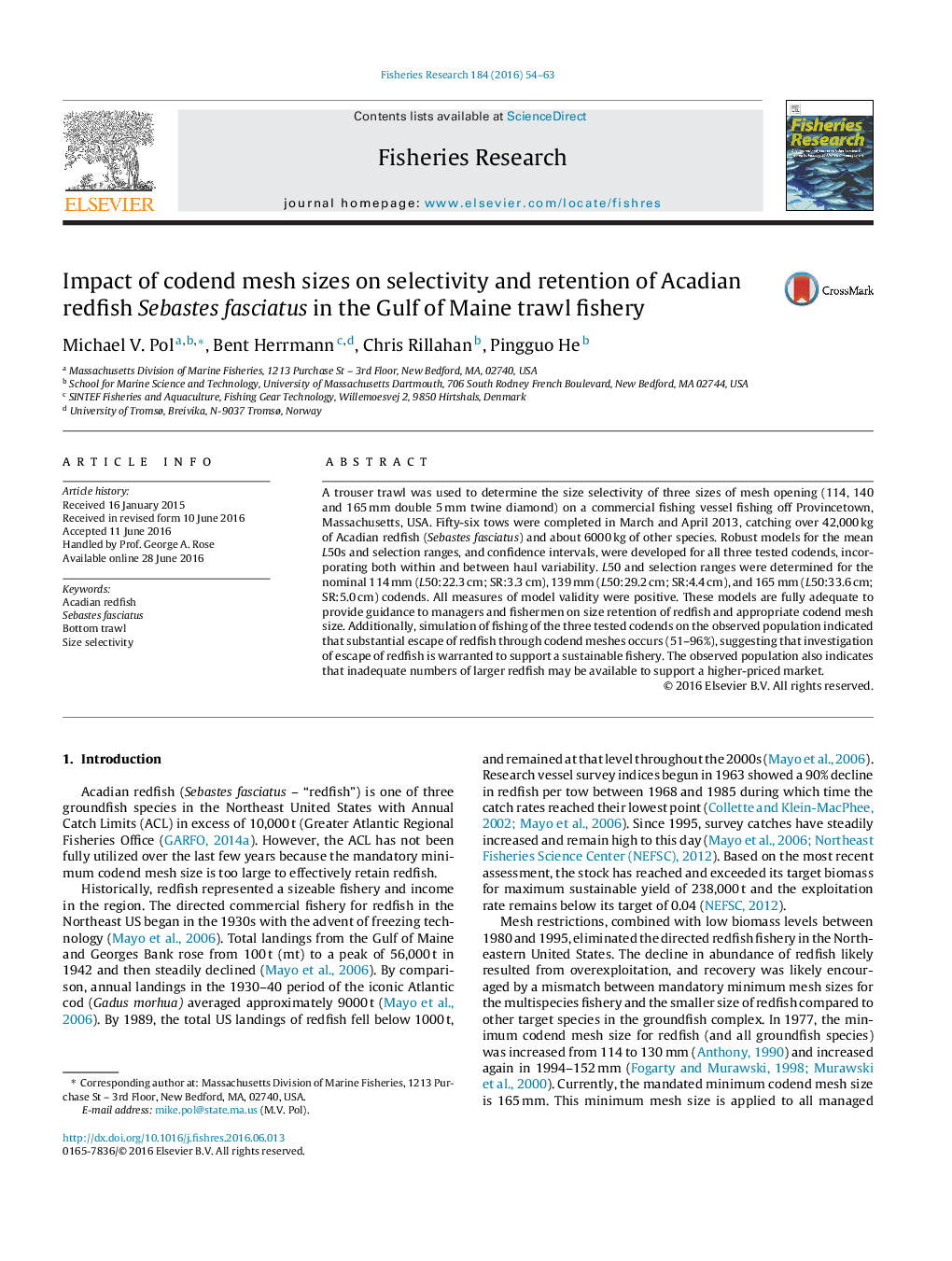| Article ID | Journal | Published Year | Pages | File Type |
|---|---|---|---|---|
| 6385278 | Fisheries Research | 2016 | 10 Pages |
â¢Simple, robust codend selectivity models were developed for three mesh openings for Acadian redfish (Sebastes fasciatus).â¢Size of codend catch and codend side were not significant factors in the final model. All measures of model validity were positive.â¢The minimum mandatory mesh size (165 mm) retained less than 5% of the fish that entered the net.â¢Location of escape (bottom, midwater, surface) likely affects mortality rates and should be investigated.
A trouser trawl was used to determine the size selectivity of three sizes of mesh opening (114, 140 and 165Â mm double 5Â mm twine diamond) on a commercial fishing vessel fishing off Provincetown, Massachusetts, USA. Fifty-six tows were completed in March and April 2013, catching over 42,000Â kg of Acadian redfish (Sebastes fasciatus) and about 6000Â kg of other species. Robust models for the mean L50s and selection ranges, and confidence intervals, were developed for all three tested codends, incorporating both within and between haul variability. L50 and selection ranges were determined for the nominal 114Â mm (L50:22.3Â cm; SR:3.3Â cm), 139Â mm (L50:29.2Â cm; SR:4.4Â cm), and 165Â mm (L50:33.6Â cm; SR:5.0Â cm) codends. All measures of model validity were positive. These models are fully adequate to provide guidance to managers and fishermen on size retention of redfish and appropriate codend mesh size. Additionally, simulation of fishing of the three tested codends on the observed population indicated that substantial escape of redfish through codend meshes occurs (51-96%), suggesting that investigation of escape of redfish is warranted to support a sustainable fishery. The observed population also indicates that inadequate numbers of larger redfish may be available to support a higher-priced market.
